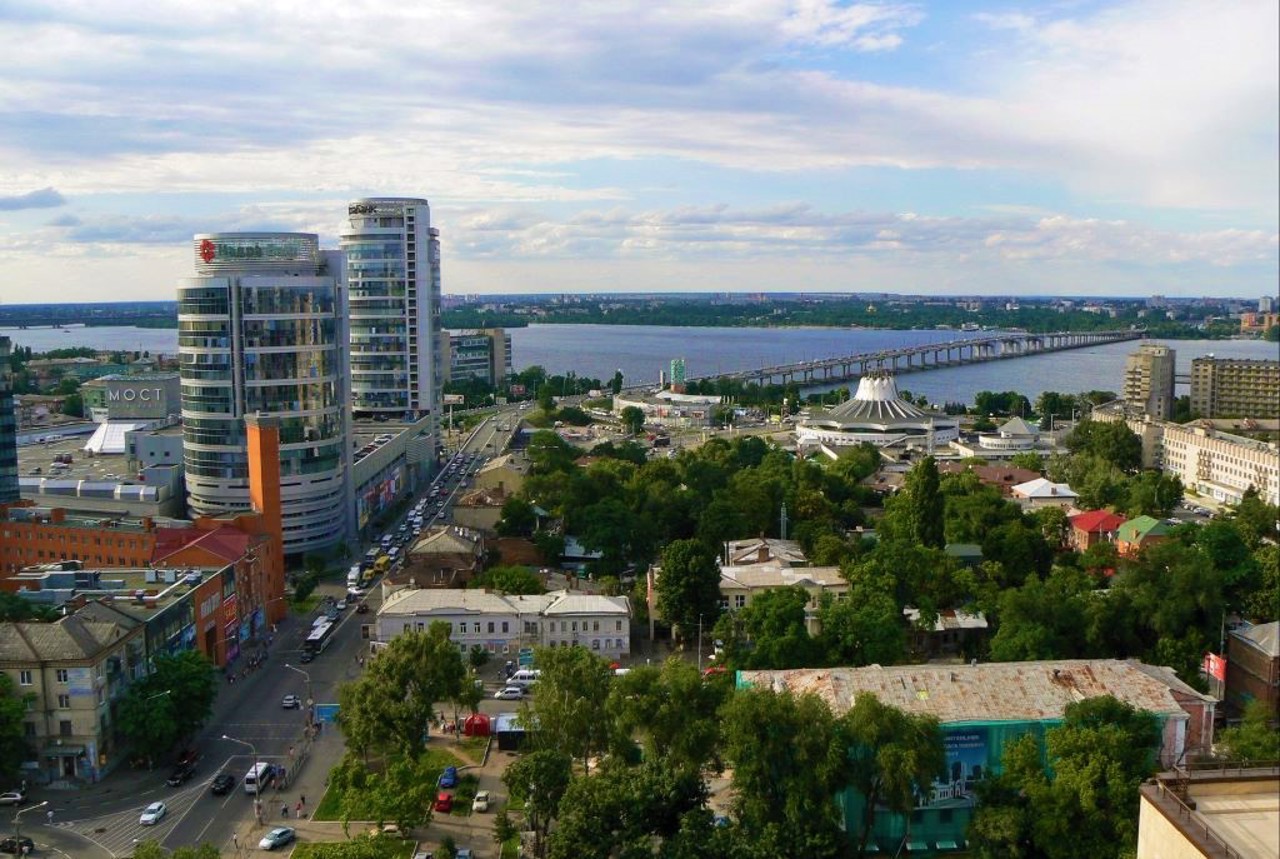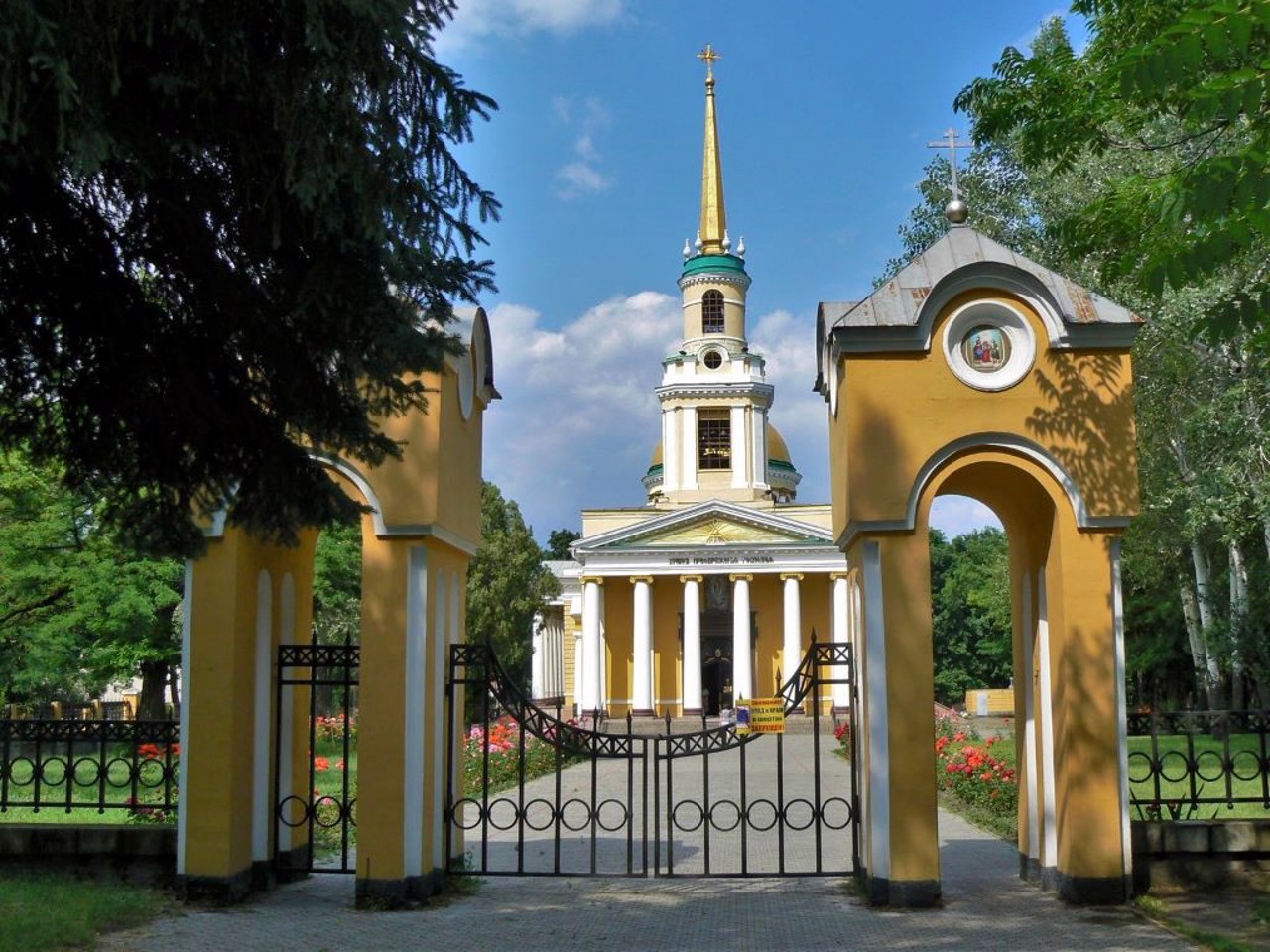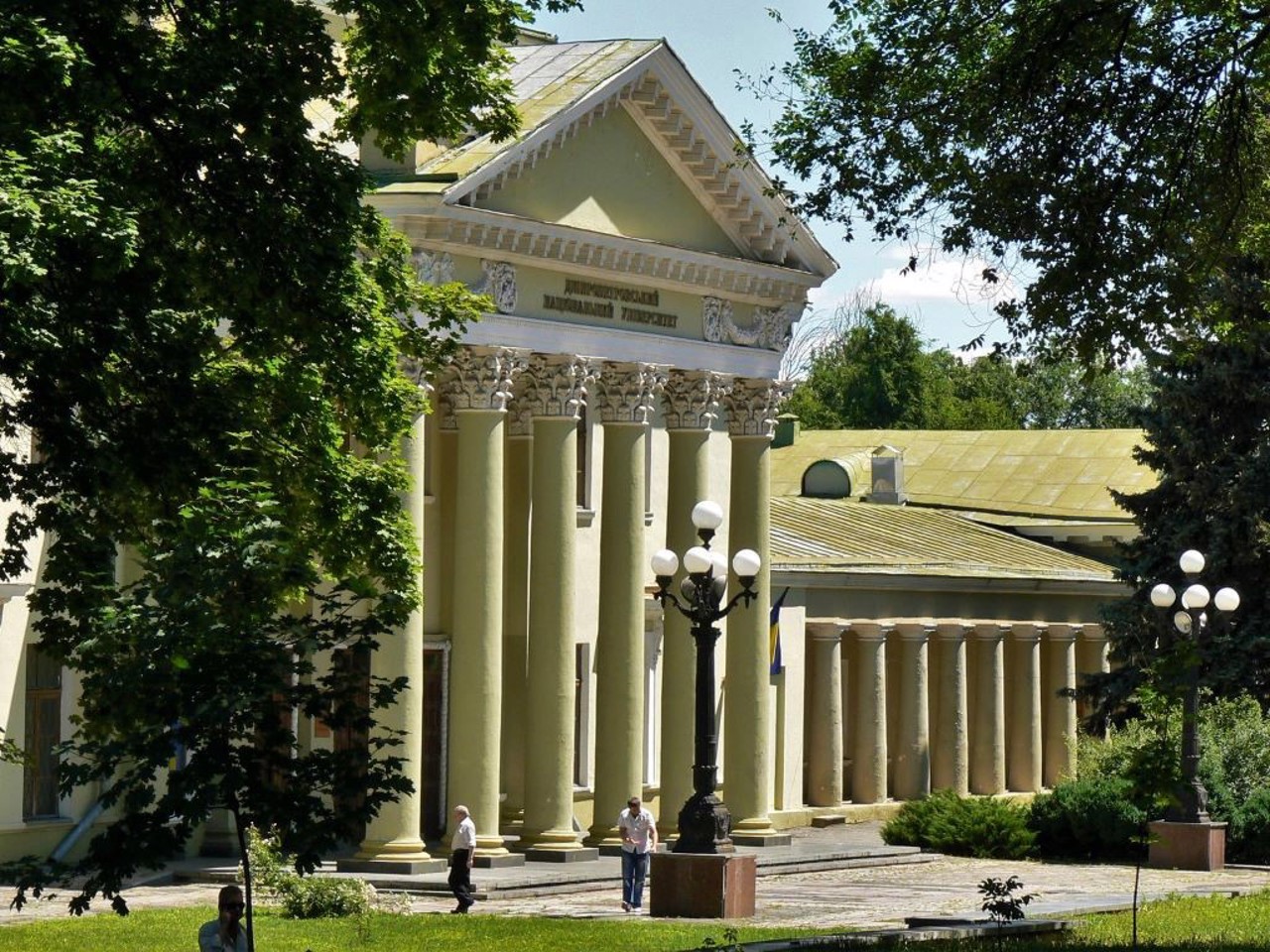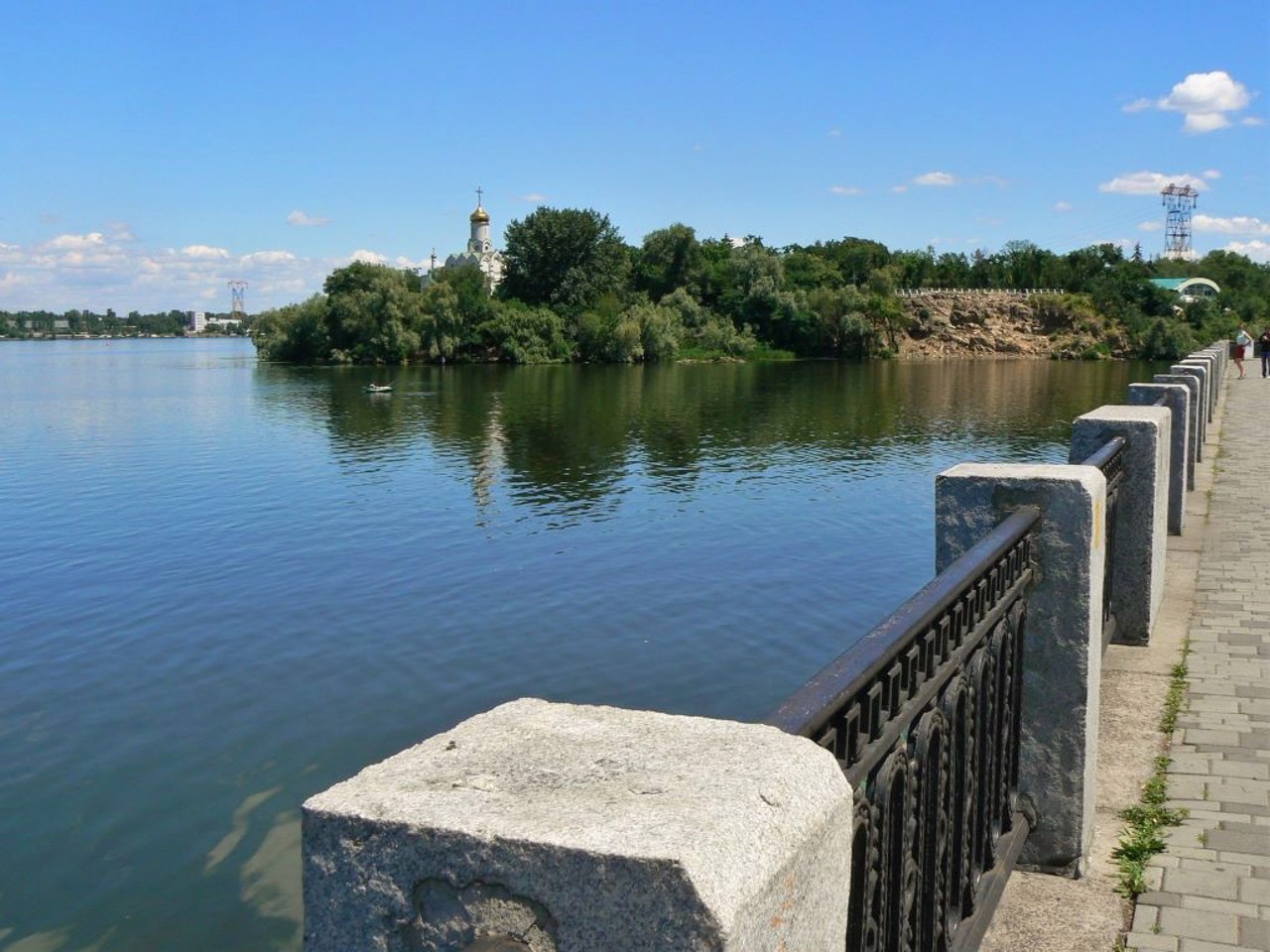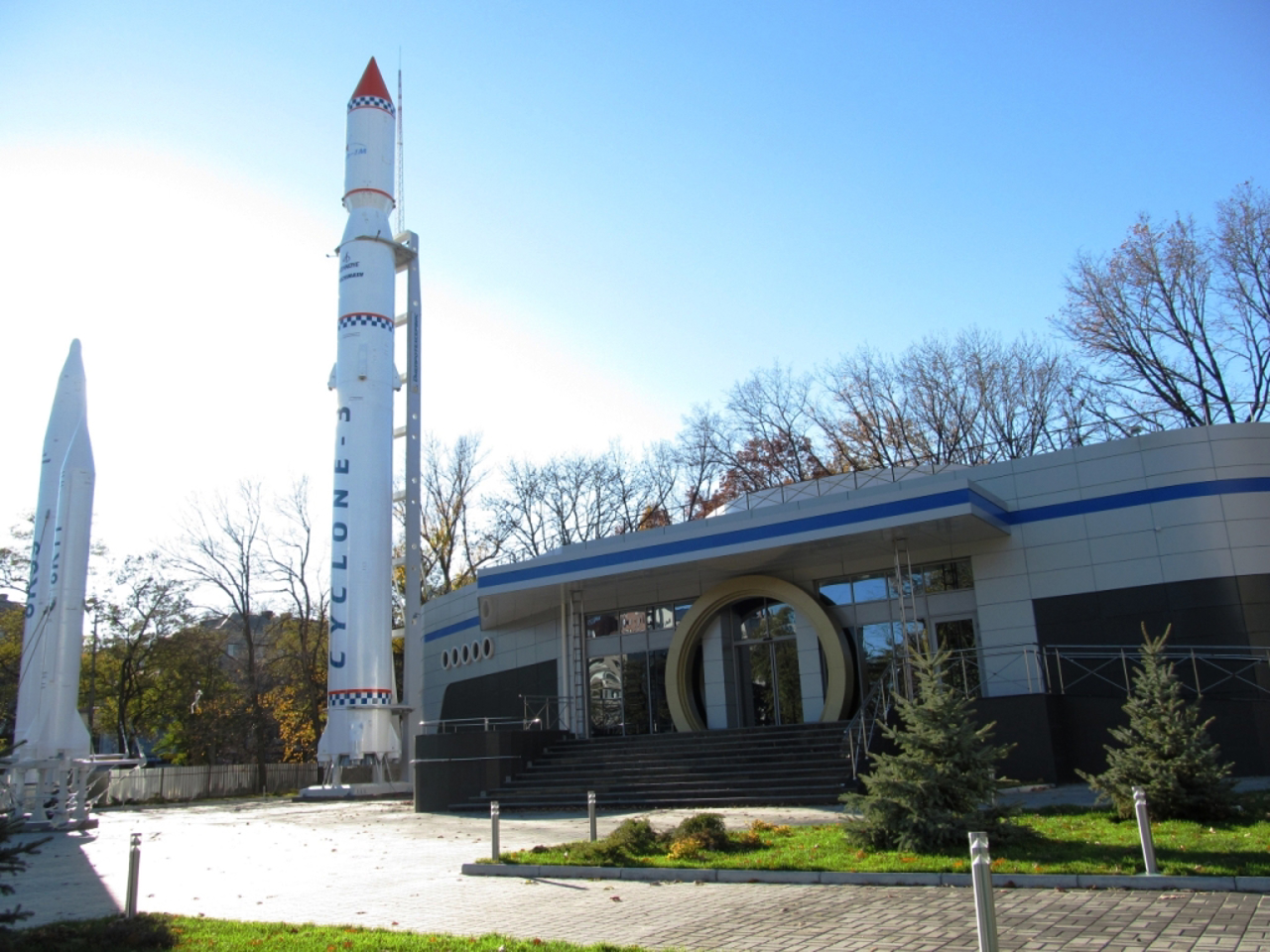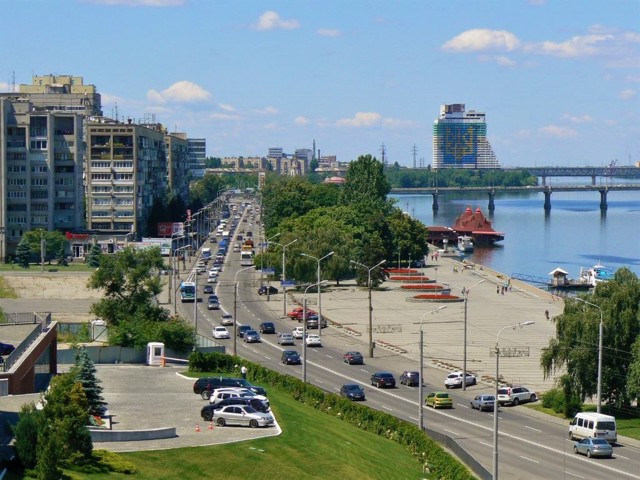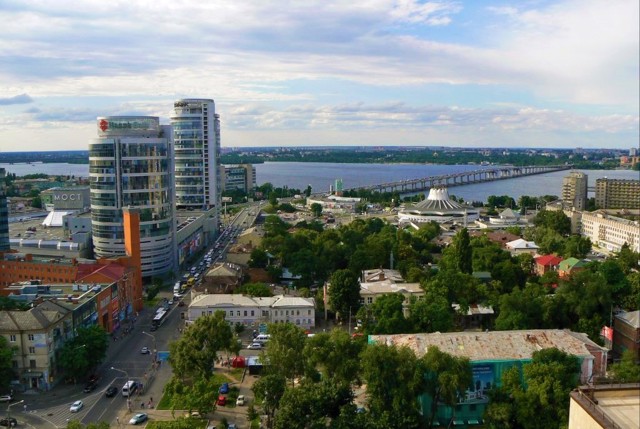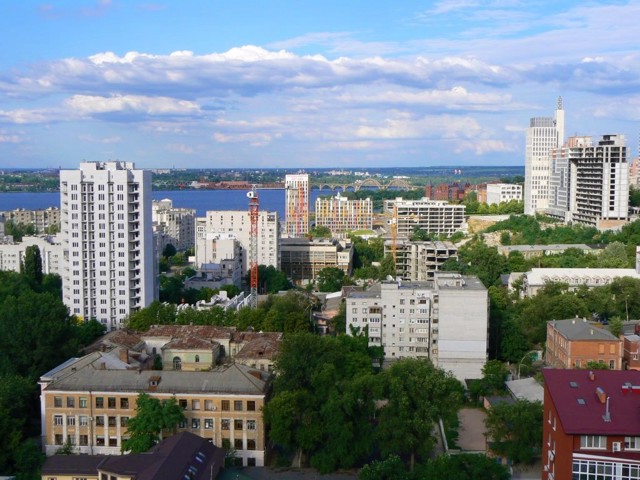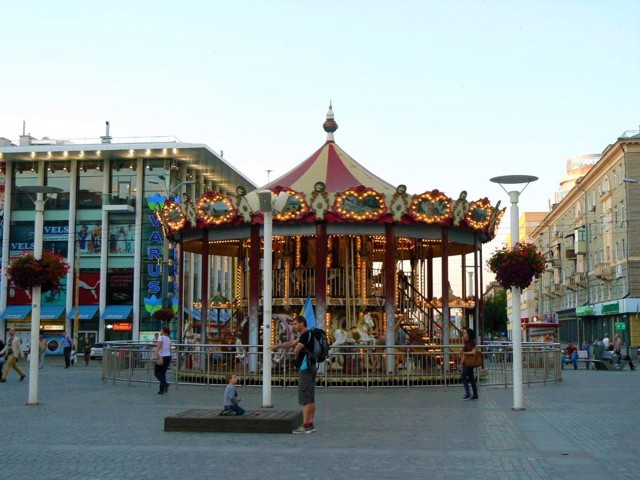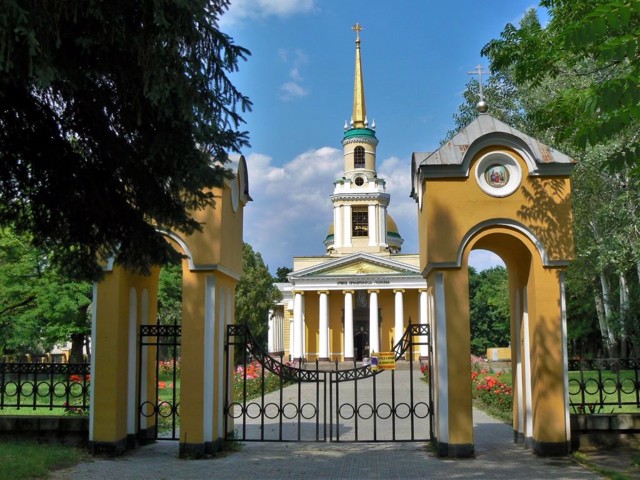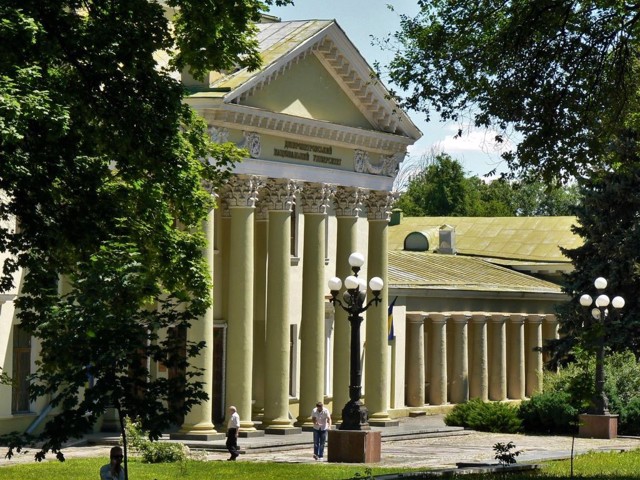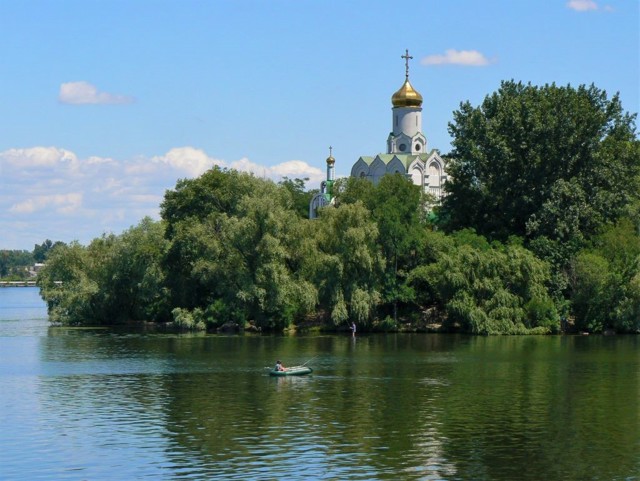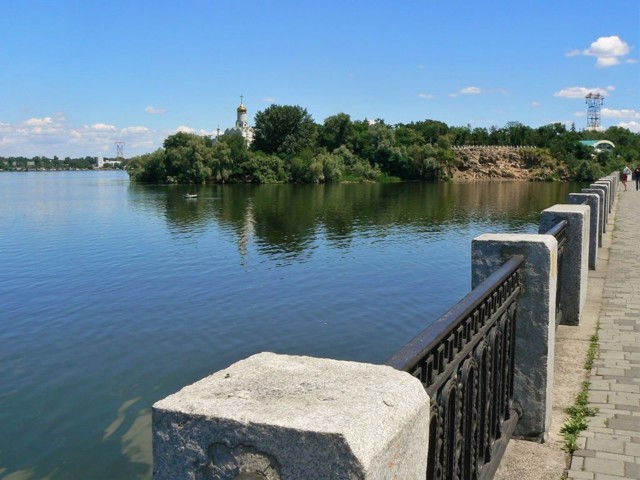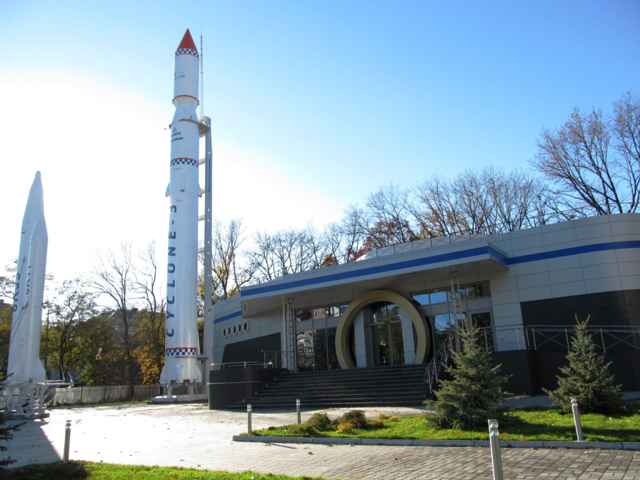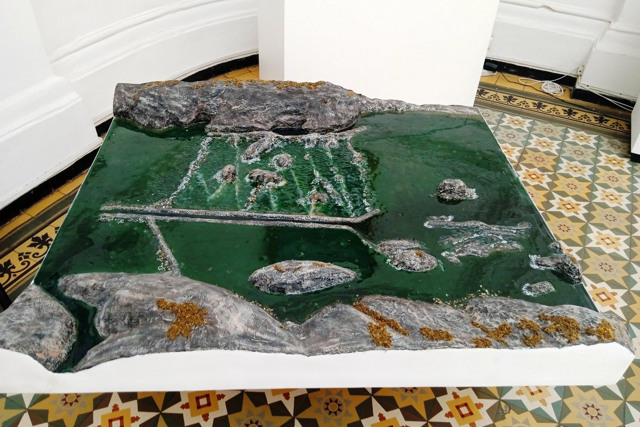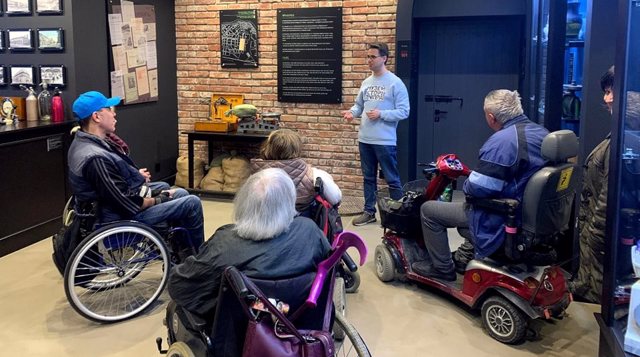Functional temporarily unavailable
General information about Dnipro
Dnipro is a picturesque city on both banks of the Dnipro, the center of the defense and space industries. In the 17th and 18th centuries, a little further down the river there was a Polish, then a Cossack fortress of Kodak (ramparts have been preserved).
The current city was founded by Prince Hrihory Potemkin as the southern capital of the Russian Empire in 1787 on the site of the Zaporozhzhian settlement of Polovytsia. It was named Katerynoslav in honor of Empress Catherine II, who personally laid the first stone. By order of Pavlo I, the city was renamed Novorossiysk for a while (1796-1802). Since 1802, it has become the provincial center. In 1820, Оleksandr Pushkin stayed here in exile.
The rapid development of Katerynoslav began in the 70s of the 19th century after the c ...
Dnipro is a picturesque city on both banks of the Dnipro, the center of the defense and space industries. In the 17th and 18th centuries, a little further down the river there was a Polish, then a Cossack fortress of Kodak (ramparts have been preserved).
The current city was founded by Prince Hrihory Potemkin as the southern capital of the Russian Empire in 1787 on the site of the Zaporozhzhian settlement of Polovytsia. It was named Katerynoslav in honor of Empress Catherine II, who personally laid the first stone. By order of Pavlo I, the city was renamed Novorossiysk for a while (1796-1802). Since 1802, it has become the provincial center. In 1820, Оleksandr Pushkin stayed here in exile.
The rapid development of Katerynoslav began in the 70s of the 19th century after the construction of a railway that connected the Kryvyi Rih iron ore and Donetsk coal basins. In the period 1917-1920, the city came under the control of Nestor Makhno's anarchist army several times. In 1926, it was renamed Dnipropetrovsk in honor of the Bolshevik revolutionary Petrovsky. However, local residents used to shorten this name to "Dnipro" in everyday life, and this is how the city was named as a result of decommunization in 2016.
The heyday of urban planning came in the 1960s, when the unique 23-kilometer long Dnipro embankment was built. After the collapse of the USSR, the city retained its industrial potential and became one of the main financial centers of the country, its architectural appearance has been renewed in recent years with modern new buildings.
Dnipro City Day is celebrated on the second Sunday of September.
Дніпро - мальовниче місто по обидва береги Дніпра, центр оборонної і космічної промисловості. У XVII-XVIII століттях трохи нижче по річці існувала польська, потім козацька фортеця Кодак (збереглися вали).
Нинішнє місто засноване князем Григорієм Потьомкіним як південна столиця російської імперії в 1787 році на місці запорозької слободи Половиця. Отримало назву Катеринослав на честь імператриці Катерини ІІ, яка особисто заклала перший камінь. За наказом Павла І місто на деякий час перейменували в Новоросійськ (1796-1802 роки). З 1802 року воно стає губернським центром. У 1820 році тут на засланні перебував Олександр Пушкін.
Швидкий розвиток Катеринослава почався в 70-х роках XIX століття після побудови залізниці, яка з'єднала Криворізький залізорудний та Донецький вугільн ...
Дніпро - мальовниче місто по обидва береги Дніпра, центр оборонної і космічної промисловості. У XVII-XVIII століттях трохи нижче по річці існувала польська, потім козацька фортеця Кодак (збереглися вали).
Нинішнє місто засноване князем Григорієм Потьомкіним як південна столиця російської імперії в 1787 році на місці запорозької слободи Половиця. Отримало назву Катеринослав на честь імператриці Катерини ІІ, яка особисто заклала перший камінь. За наказом Павла І місто на деякий час перейменували в Новоросійськ (1796-1802 роки). З 1802 року воно стає губернським центром. У 1820 році тут на засланні перебував Олександр Пушкін.
Швидкий розвиток Катеринослава почався в 70-х роках XIX століття після побудови залізниці, яка з'єднала Криворізький залізорудний та Донецький вугільний басейни. В період 1917-1920 років місто кілька разів переходило під контроль анархістської армії Нестора Махна. В 1926 році перейменоване в Дніпропетровськ на честь більшовицького революціонера Петровського. Втім, місцеві жителі в побуті звикли скорочувати цю назву до "Дніпро", і саме так місто було назване внаслідок декомунізації у 2016 році.
Розквіт містобудування припав на 1960-і роки, коли була споруджена унікальна 23-кілометрова Дніпровська набережна. Після розвалу СРСР місто зберегло промисловий потенціал і стало одним з головних фінансових центрів країни, його архітектурний вигляд в останні роки оновлений сучасними новобудовами.
День міста Дніпро відзначається у другу неділю вересня.
Сплануй своє перебування у Dnipro
What to see and where to go in Dnipro
Tourist attractions and museums of Dnipro
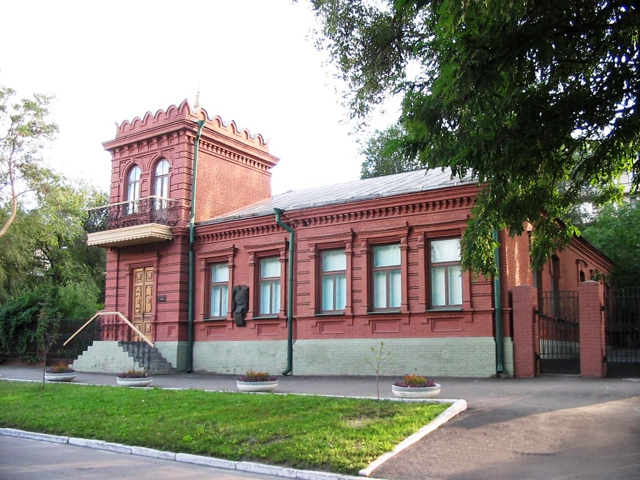
Dmytro Yavornytsky House-Museum
Palace / manor , Museum / gallery
The memorial house-museum of Academician Dmytro Yavornytsky in Dnipro is the only residential estate of old Katerynoslav that has survived to this day.
It was built in 1905 according to the project of architect Leonid Brodnytsky opposite the Potomkin Palace in the current Shevchenko Park. Dmytro Yavornytsky, a prominent Ukrainian historian, archaeologist, and public figure, lived and worked in this small red-brick house with a belvedere and a carved wooden veranda for 35 years. Heading the Dnipropetrovsk Historical Museum, he became famous as a researcher of the history of the Zaporizhzhian Cossacks.
The interiors of the rooms of Yavornytsky's house were recreated as they were during his life: the lobby, the hall, the study, the living room, the dining room, the mezzanine. The exhibition presents many memorial items: student notebooks from the time of study at the Kharkiv gymnasium, workbooks exhibited his own things, documents, letters, photographs, paintings. Among personal belongings: embroidered shirt, stick, glasses, etc.
In front of the house you can still see pine and poplar planted by Yavornytsky.

Dnipropetrovsk National Historical Museum named after Dmytro Yavornytsky
Museum / gallery
Dnipropetrovsk National Historical Museum named after Dmytro Yavornytsky in Dnipro presents one of the best historical collections of Ukraine, in particular Cossack antiquities.
It is also one of the most progressive museums in Ukraine, which holds regular museum festivals, theatrical night tours with music and lighting effects, themed museum salons.
The institution was founded in 1849 by Governor Andriy Fabre as the Public Museum of the Ekaterinoslav Province. At first he was housed in one of the rooms of the Potomkin Palace, then moved several times. In 1902, on its basis, as well as on the basis of several private collections, the Regional Museum named after Oleksandr Pol was opened, headed by a prominent historian, researcher of the Ukrainian Cossacks Dmytro Yavornytsky. Since 1905, the museum has been housed in a museum building specially built for him in a modernized classicist style.
Today the funds of the Historical Museum. Yavornytsky has 240,000 museum items. About 7,000 of them are presented in the exhibition, which tells about the history of the region from ancient times to the middle of the twentieth century. These include archeological monuments, relics of the Zaporizhzhian Cossacks, old prints and rare editions, porcelain, clocks, furniture, weapons and many other historical and cultural monuments. In particular, a statuette of Pharaoh Ramses VI, a milk cart and a carriage from the time of Catherine II's journey to the South, the first Soviet tractor. In front of the entrance there is a collection of stone sculptures: Scythian stone statues and Polovtsian "babas". A monument to Dmytro Yavornytsky's grave has been erected on the square near the museum.
The old one-storey part of the museum is combined with a new two-storey building, which houses the largest in Ukraine dioramas "Battle for the Dnipro" with an exhibition of military equipment nearby, as well as the new "Museum of the Modern Russian-Ukrainian War", the street part of which is located on the museum square.
In addition, the Dnipropetrovsk National Historical Museum named after Dmytro Yavornytsky has a number of branches in the city:
- House-museum of Dmytro Yavornytsky
- Museum center of the family of Helena Blavatska
- Literary Prydniprovya Museum;
- Museum of the history of local self-government.
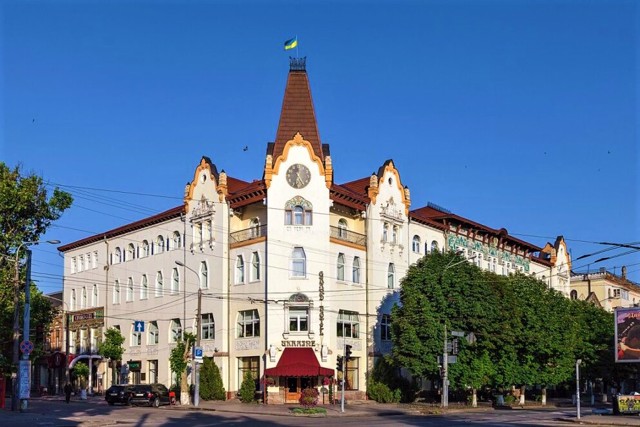
Khrinnykov House (Grand Hotel Ukraine)
Architecture
An interesting building in the style of Ukrainian Art Nouveau on the central avenue of the city is called "Khrinnykov's House" or "Ukrainian House" in Dnipro.
The four-story commercial building was built in 1912 by the entrepreneur and philanthropist Volodymyr Khrinnykov from Ekaterinoslav according to the project of the Kyiv architect Petro Fetysov. According to the idea of Khrinnikov, who was a Ukrainian patriot, a member of the council of the local association "Prosvita", the new building was to become an architectural embodiment of Ukrainian national culture.
Ethnographer and historian Dmytro Yavornytskyi played a significant role in the development of the project. Hexagonal windows, multi-tiered tent towers with forged spiers, red tiled roofs and white walls resembled the forms of the structure of the times of the Zaporizhzhian Sich. Originally, the spiers of the towers were crowned with images of a horse, a quiver and a falcon, as well as a weather vane cross with a Cossack and a noble fighting. Colorful majolica has been preserved under the roof, as well as the image of the main element of the coat of arms of the Zaporizhzhia Army - a Cossack with a musket and a saber. Part of the wing of the building was once equipped for theatrical purposes.
Before the Bolshevik coup of 1917, the "Khrinnykov House" housed the "Palace" theater. Currently, the building is occupied by the five-star Grand Hotel "Ukraine".
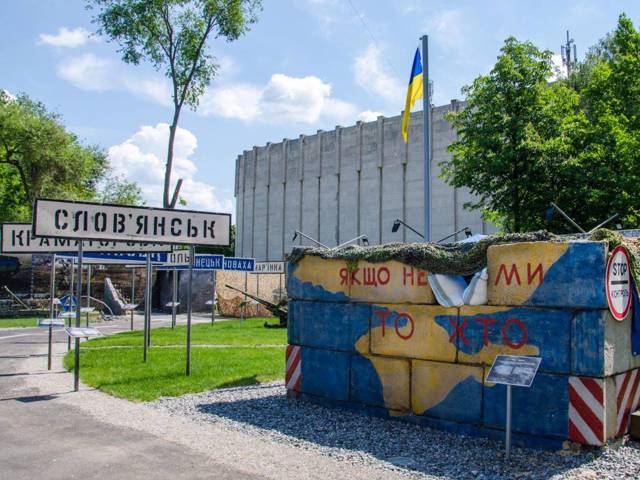
Modern Russian-Ukrainian War Museum
Museum / gallery
The Museum of the Modern Russian-Ukrainian War, which recreates the main events of the war and honors Ukrainian soldiers, is a department of the Dnipropetrovsk National Historical Museum named after Dmytro Yavornytsky.
Created in 2016-2017 on the initiative of ATO participants and volunteers as the museum "Civil feat of residents of the Dnipropetrovsk region in the events of the ATO" (ATO Museum). In 2023, by the decision of the deputies of the regional council, the museum was renamed the "Museum of the Modern Russian-Ukrainian War".
The open-air street exhibition "Ways of Donbass" has more than 400 exhibits that are symbols of war: a typical reinforced concrete checkpoint, anti-aircraft gun ZU-23-2, ambulance, infantry fighting vehicle BMP-2, T-64 tank turret, military SUV, road signs of the cities of Donbass, a sculptural composition "Soldier and the girl".
Even more exhibits are presented in an internal exhibition of more than 500 square meters, which tells about the military, volunteers, migrants, journalists, chaplains and medics.
In the "Hall of Bright Memory of Heroes" 500 photo portraits of the fallen soldiers of the Armed Forces and volunteer formations from Dnipropetrovsk region are presented. In the hall of panoramic video you can watch the documentary "Dnipropetrovsk region in the events of the anti-terrorist operation" with the effect of presence.
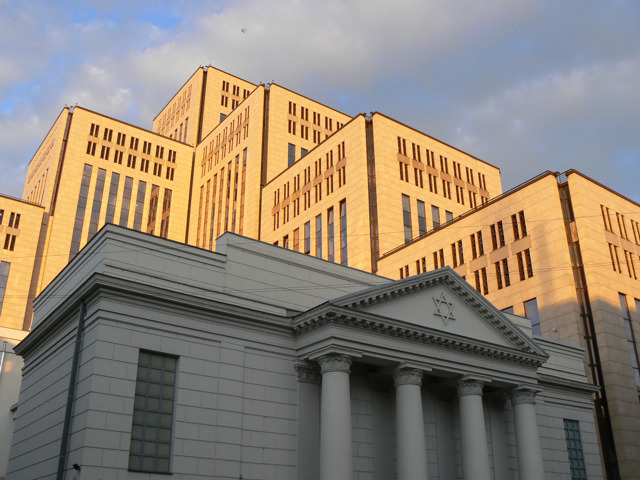
Museum "Jewish Memory and Holocaust in Ukraine"
Museum / gallery
Museum "Jewish Memory and Holocaust in Ukraine" in Dnipro is the largest museum in the country, which tells the story of Jewry in Ukraine, as well as the persecution and mass murder of Jews by the Nazis during World War II.
The museum also tells about the tragedies of Ukrainians, Roma, Armenians, Crimean Tatars, Poles and other peoples.
The museum collection has more than 16 thousand exhibits of the main fund. These are objects of Judaism and a collection of publications of spiritual literature of the XIX-XX centuries, household items of that era, artifacts related to the Holocaust (literature, leaflets and announcements, equipment and weapons), personal belongings of Jews involved in World War II, documents, manuscripts and photos related to the history of the Jews of Ukraine.
The exhibition uses the principle of combining unique exhibits, modern multimedia technologies and art installations. In particular, the diorama "Babyn Yar" is presented.
Visitors are offered different types of excursions - both sightseeing, throughout the Museum, and thematic, devoted to a detailed examination of certain aspects of Jewish and Ukrainian history, culture and religion.
The museum is located on the 3rd floor of the Jewish cultural and business center "Menorah" in the center of Dnipro. There is also a choral synagogue, kosher restaurant, hotel. Visitors are offered comprehensive tours of the center, including access to the observation deck on the 18th floor.
Dnipro in news and blogs
Reviews Dnipro
Geographical information about Dnipro
| {{itemKey}} | {{itemValue}} |
|---|---|
| Region |
Dnipropetrovsk |

